Researchers at the Philippine Coconut Authority – Zamboanga Research Center (PCA-ZRC) introduced the “one-nut concept” as a method of producing wares and novelty items from a single piece of coconut fruit. Following this concept, the residues from matured coconut fruits were crafted into a new high value-added products by employing the “mix and match” technique.
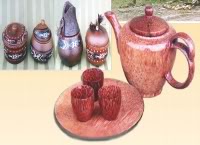
Coconut varieties such as the PCA SYN VAR or GMA Farmers variety and “kiamba” green dwarf are made into coco clocks, trays, and other similar products. Fronds are likewise turned into crafts.
Skillfulness, creativity and craftsmanship on the part of the people involved in the job are necessary to come up with new and exciting products. Some of the crafts and novelty items produced are all-purpose trays, trophies, flower vases and candle holders, chairs, dividers, plant boxes, tables, and dressers. The production costs for such crafts is about 50-60% cheaper than the traditional materials such as wood.
Coconut Handicrafts and Novelty Items
Production Method
A. Coconut Fronds
1. Collecting and drying of fronds – Collect fronds during nut harvesting. If they are left on the field, they are attacked by wood-boring insects and fungi that abound on coconut. These pests inflict serious damage to all parts of the fronds, thus, reducing their strength and visual value.
2. Drying – After gathering, clear fronds of leaflets and dry naturally under shed. Drying times ranges from 4 weeks to 6 weeks depending on weather conditions.
3. Machining, ripping/sawing – Cut fronds with either manual or motor driven saws. Polish, machine and assemble using common wood working tools. For added strength, combine the fronds with light woody materials or thin plywood (e.g., 1/8″) when used in furniture, novelty items and other fixtures.
4. Preserving treatment – Prior to assembly, treat dried raw materials with preservatives such as “Cuprinol” or “Solignum”. This is necessary to prevent infestation by wood boring insects. A mixture of Cuprinol and kerosene can be used at 8:1 ratio (kerosene: preservative).
5. Assembly – Nails and common white glues, e.g, Elmer’s are effective fasteners. Split rattan can also be used as a mechanical binder. It does not only add strength, but also improves the aesthetic appeal of the product.
6. Finishing – Sand the wood smooth before finishing. Then apply two to three coats of lacquer sanding sealer before the final coating of varnish or clear gloss lacquer.
7. Packaging – Corrugated paperboards, molded and fashioned into rigid boxes, are good packaging materials for products such as picture frames, and other novelty items.
B. Coconut Fruit Residues
Some of the handicraft items that can be produced from coconut fruit residues are trays, plant pots, coco clocks, coco trophies, and coin banks. The process involves the following steps:
1. The coconut variety “Kiamba” green dwarf is suitable for making coco clock and trophies because of its size and shape. Likewise, the dwarf variety “Mangipod” is a good material for making all-purpose trays.
2. Slice/ cut the materials using a sharp narrow band saw (2″ wide). Use a motor-driven sander for sanding. Use glues such as PVA or urea formaldehyde and wooden dowels as fasteners to assemble the product. Nails of any metal fasteners could not easily hold the husk due to its naturally loose structure.
3. For coco clock, saw parallel through the polar section of the nut. For the trays, it is ideal to cut across the equatorial section.
4. When finishing, machine-sand with coarse abrasives to level off the surface and make it even. Further, sand manually using a fine abrasive for a smooth surface prior to application of a topcoat of varnish.
5. Since the husk takes in a great quantity of finishing materials, seal with PVA emulsion glue before applying topcoat. Among the suitable top coating materials are clear gloss lacquer, polyurethane and varnish. Brush on three to four coatings of the finishing material. It is best to topcoat during hot and dry weather.
For more information, please contact:
The Consortium Director
Western Mindanao Agriculture, Forestry and Resources Research and Development Consortium (WESMARRDEC)
Western Mindanao State University (WMSU), San Jose, Zamboanga City
Tel No.: (062) 991-4305
Tele Fax No.: (062) 991-5087
email: wesmarrdec@wmsu.edu.ph
website: wmsu.edu.ph
Dr. Patricio Faylon
Executive Director
PCARRD, Los Banos , Laguna
Tel No.: (049) 536-0014 to 20; 536-5907
Fax No.: 049) 536-0016/ 536-7922
email: pcarrd@pcarrd.dost.gov.ph
website: pcarrd.dost.gov.ph
Sources: dti.gov.ph, PCARRD
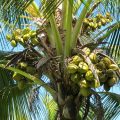

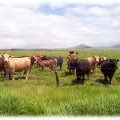
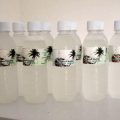
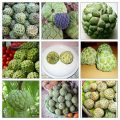


start earning dollars now, http://InternetDuty.com/?id=Chloe.